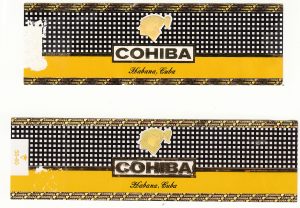Spotting a fake Cohiba Cigar
Last month, I had a few cigars given to me from a friend as a gift. One of the most sought-after cigars, the Cuban Cohiba Cigar. There are so many interesting pieces to this cigar: the history of the cigar and the US embargo against Cuba, the social attachment while pairing the cigar with Latin culture-tradition-fashion, and complexity of flavors in the tobacco filler and profile. But, lastly, recognizing an authentic Cohiba cigar.
There are 5 key things to recognize from an authentic Cohiba cigar from an unauthentic Cohiba better known as a fake.

Sign #1 is the Taino Indian Head of Hatuey in the band. The Head should be placed front and center on the holographic and if you look closer you will see a smaller head within the larger. The “head-within-head” effect is a sign letting you know that the band is authentic. The symbolism here is that the Taino people were historically indigenous people of the Caribbean, whose culture has been continued today throughout Cuba, Dominican Republic, Jamaica, Puerto Rico, the Bahamas and the Lesser Antilles.
#2, is the holographic Cuba followed by the Taino head logo and Cohiba repeating across the gilded top and bottom edges of the band.
Sign #3 and #4, the white checkerboard pattern running across the band, The pattern should consist of nine squares from the top of the edge of the holographic strip to the gold divider, and seven squares when spanning to the Cohiba text in the middle of the band. It’s often mentioned that if the squares do not form correctly due to the gold divider or the top holographic it is said to be an error and possibly counterfeit.
Sign #5 the Embossed Lettering. The centered Cohiba lettering should be within a white background with a square, gold border, embossed with proper gilding. It should be a lustrous, metallic gold not holographic.
Sign #6 is the cap of the cigar. The Cohiba is known for its triple cap, where the leaf wraps around 3 times forming a cap on the end of the cigar.

Even with all that said, we’re only talking about the aesthetic of the cigar. The true tell is the cigar itself. The cigar comes with a variety of complexity from the wrapper, filler, and binder. All of which go under so many quality checks: a draw machine which tests the flow of air that can go through the cigar, a selection by color which is hand selected by key personnel, and lastly the placement of the label on the most beautiful face of the cigar.

Leave A Comment